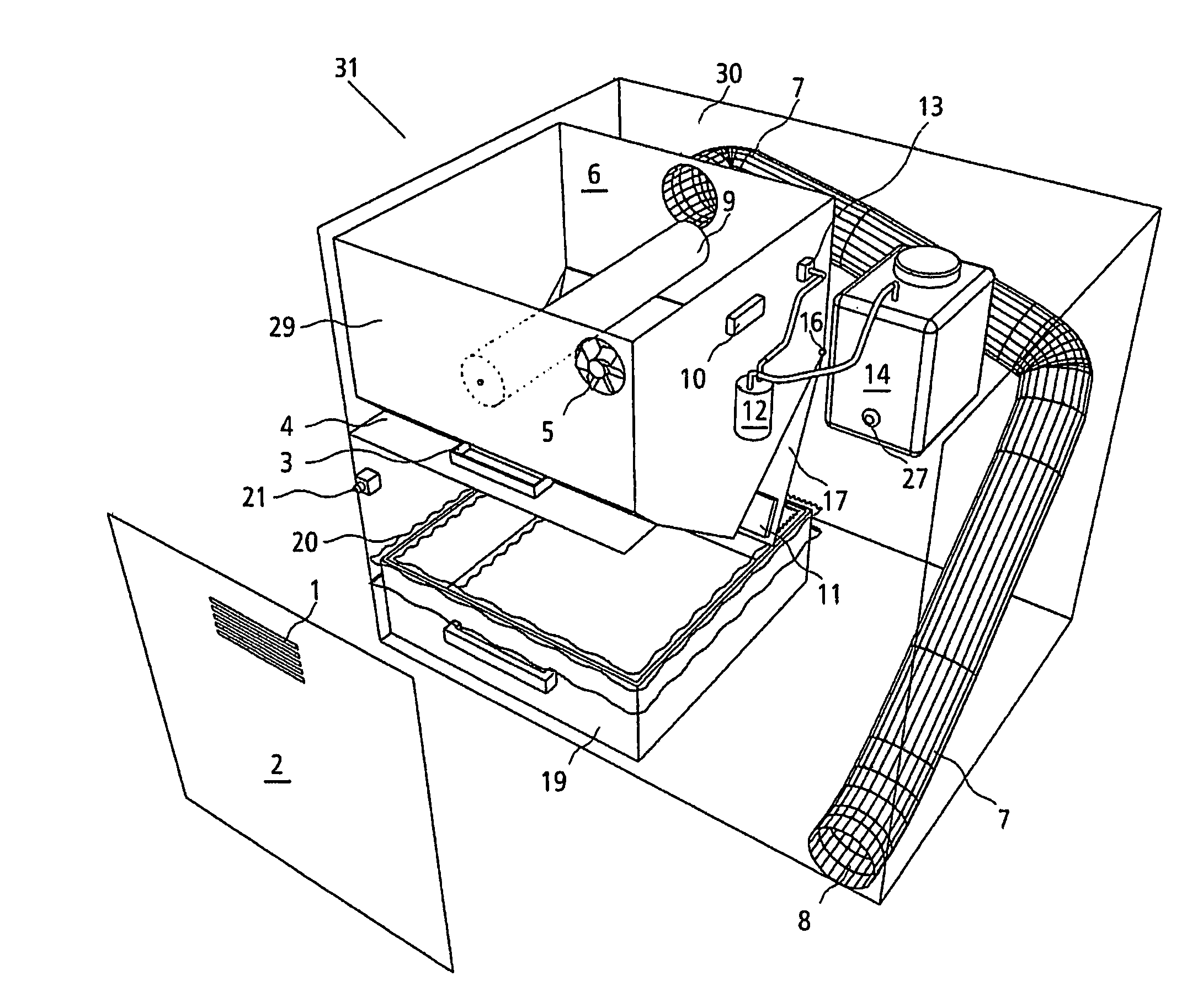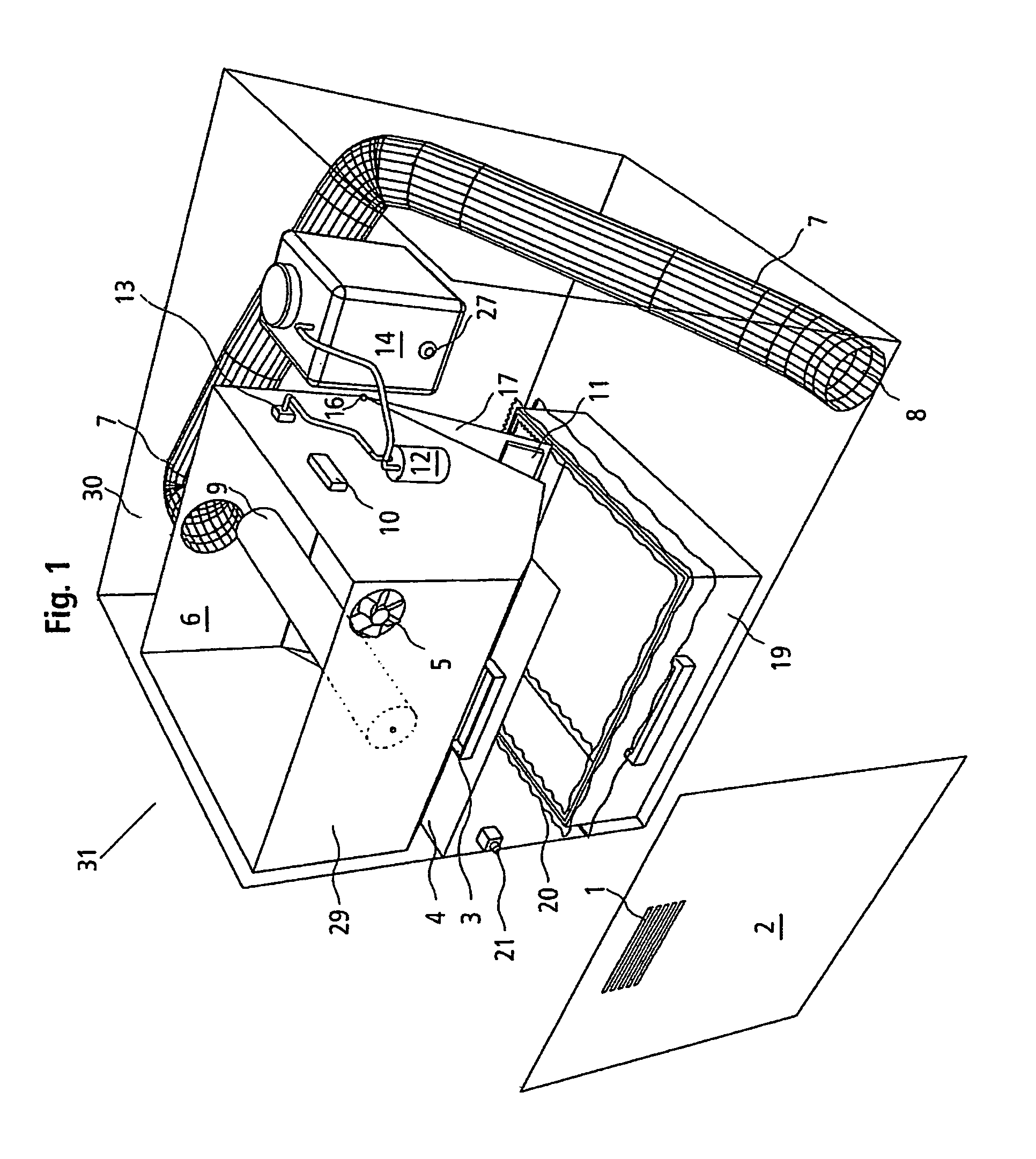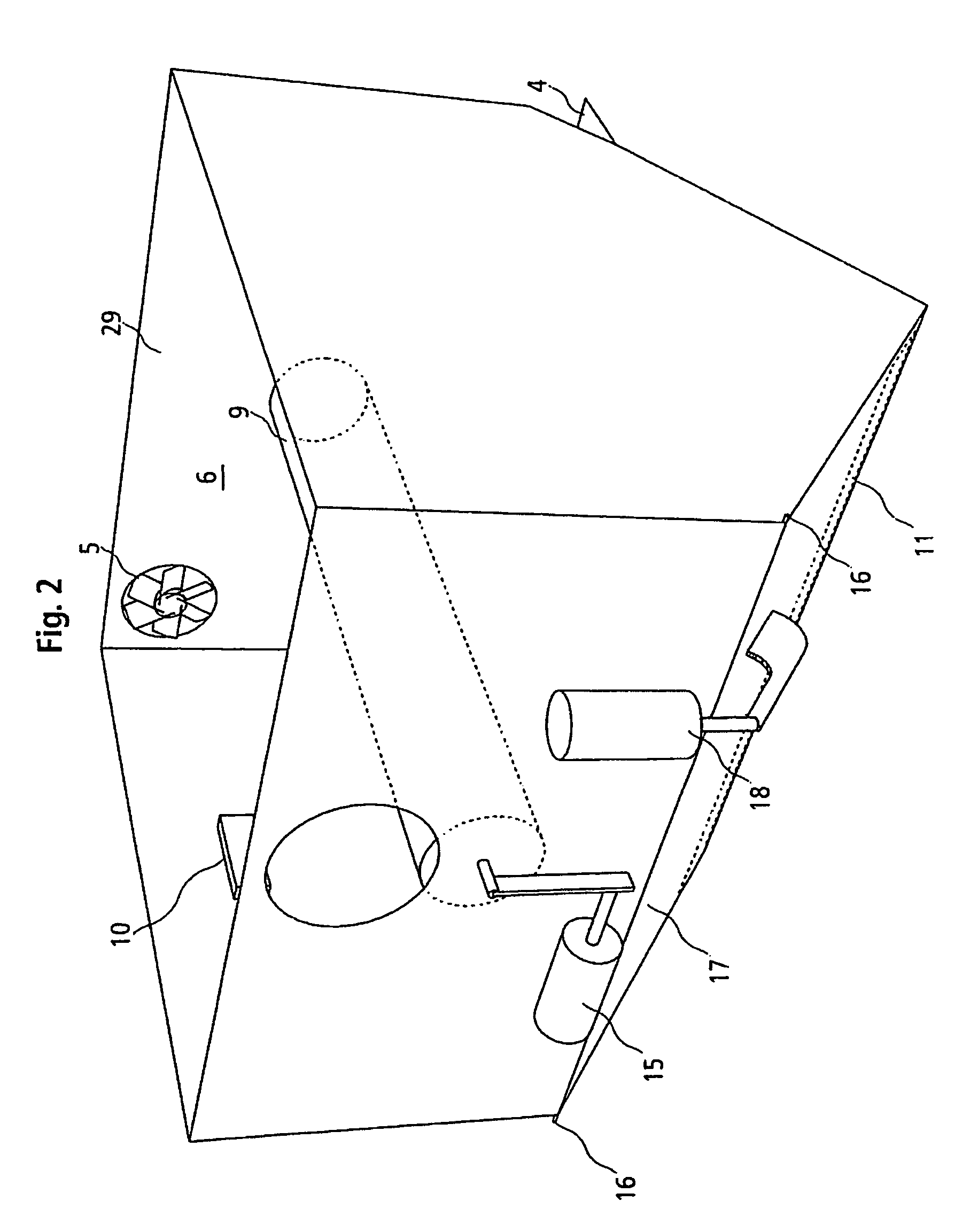Electronic multiple-use vermin trap and method
- Summary
- Abstract
- Description
- Claims
- Application Information
AI Technical Summary
Benefits of technology
Problems solved by technology
Method used
Image
Examples
Embodiment Construction
[0097] Referring now in detail to the accompanying drawings, there is illustrated an exemplary embodiment of an electronic multiple-use trap according to the present invention, generally referred to by the numeral 31. The exemplary embodiment illustrates an electrocution style of trap, but the present invention could easily be practiced as a live-catch trap.
[0098] The purpose of the exemplary embodiment of the present invention is to attract rodents and / or pests to a self-contained automated system that efficiently and humanely kills them and eliminates the need for humans to directly handle the carcasses when disposing of them. This system eliminates direct contact with humans by utilizing disinfectants and sanitary containment for disposal. The self-contained unit is appropriately sized to conform to the physical characteristics of the rodent and / or pest that is the subject.
[0099] Referring now to FIG. 1, an exemplary trap 31 is illustrated comprising a housing 30 (which is cut ...
PUM
 Login to View More
Login to View More Abstract
Description
Claims
Application Information
 Login to View More
Login to View More - R&D
- Intellectual Property
- Life Sciences
- Materials
- Tech Scout
- Unparalleled Data Quality
- Higher Quality Content
- 60% Fewer Hallucinations
Browse by: Latest US Patents, China's latest patents, Technical Efficacy Thesaurus, Application Domain, Technology Topic, Popular Technical Reports.
© 2025 PatSnap. All rights reserved.Legal|Privacy policy|Modern Slavery Act Transparency Statement|Sitemap|About US| Contact US: help@patsnap.com



